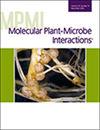求助PDF
{"title":"Beyond Asexual: Genomics-Driven Progress in Unveiling Sexual Reproduction in Cereal Rust Fungi.","authors":"Shideh Mojerlou, Mareike Moeller, Benjamin Schwessinger, Julian Rodriguez-Algaba","doi":"10.1094/MPMI-10-24-0122-FI","DOIUrl":null,"url":null,"abstract":"<p><p>Recent advances in genomics technologies have revolutionized our understanding of cereal rust fungi, providing unprecedented insights into the complexities of their sexual life cycle. Genomic approaches, including long-read sequencing, genome assembly, and haplotype phasing technologies, have revealed critical insights into mating systems, genetic diversity, virulence evolution, and host adaptation. Population genomics studies have uncovered diverse reproductive strategies across different cereal rust species and geographic regions, highlighting the interplay between sexual recombination and asexual reproduction. Transcriptomics have begun to unravel the gene expression networks driving sexual reproduction, and complementary omics approaches such as proteomics and metabolomics offer potential insights into the underlying molecular processes. Despite this progress, many aspects of cereal rust sexual reproduction remain elusive. Integrating multiple omics approaches with advanced cell biology techniques can help address these knowledge gaps, particularly in understanding sexual reproduction and its role in pathogen evolution. This comprehensive approach will be crucial for developing more targeted and resilient crop protection strategies, ultimately contributing to global food security. [Formula: see text] Copyright © 2025 The Author(s). This is an open access article distributed under the CC BY 4.0 International license.</p>","PeriodicalId":19009,"journal":{"name":"Molecular Plant-microbe Interactions","volume":" ","pages":"206-212"},"PeriodicalIF":3.4000,"publicationDate":"2025-03-01","publicationTypes":"Journal Article","fieldsOfStudy":null,"isOpenAccess":false,"openAccessPdf":"","citationCount":"0","resultStr":null,"platform":"Semanticscholar","paperid":null,"PeriodicalName":"Molecular Plant-microbe Interactions","FirstCategoryId":"99","ListUrlMain":"https://doi.org/10.1094/MPMI-10-24-0122-FI","RegionNum":3,"RegionCategory":"生物学","ArticlePicture":[],"TitleCN":null,"AbstractTextCN":null,"PMCID":null,"EPubDate":"2025/3/19 0:00:00","PubModel":"Epub","JCR":"Q2","JCRName":"BIOCHEMISTRY & MOLECULAR BIOLOGY","Score":null,"Total":0}
引用次数: 0
引用
批量引用
Abstract
Recent advances in genomics technologies have revolutionized our understanding of cereal rust fungi, providing unprecedented insights into the complexities of their sexual life cycle. Genomic approaches, including long-read sequencing, genome assembly, and haplotype phasing technologies, have revealed critical insights into mating systems, genetic diversity, virulence evolution, and host adaptation. Population genomics studies have uncovered diverse reproductive strategies across different cereal rust species and geographic regions, highlighting the interplay between sexual recombination and asexual reproduction. Transcriptomics have begun to unravel the gene expression networks driving sexual reproduction, and complementary omics approaches such as proteomics and metabolomics offer potential insights into the underlying molecular processes. Despite this progress, many aspects of cereal rust sexual reproduction remain elusive. Integrating multiple omics approaches with advanced cell biology techniques can help address these knowledge gaps, particularly in understanding sexual reproduction and its role in pathogen evolution. This comprehensive approach will be crucial for developing more targeted and resilient crop protection strategies, ultimately contributing to global food security. [Formula: see text] Copyright © 2025 The Author(s). This is an open access article distributed under the CC BY 4.0 International license.
超越无性:基因组学驱动的谷类锈菌有性生殖研究进展。
基因组学技术的最新进展彻底改变了我们对谷物锈菌的理解,为其性生活周期的复杂性提供了前所未有的见解。基因组方法,包括长读测序、基因组组装和单倍型相位技术,揭示了对交配系统、遗传多样性、毒力进化和宿主适应的重要见解。种群基因组学研究揭示了不同谷物锈菌种类和地理区域的不同繁殖策略,强调了有性重组与无性繁殖之间的相互作用。转录组学已经开始揭示驱动有性生殖的基因表达网络,而互补组学方法,如蛋白质组学和代谢组学,为潜在的分子过程提供了潜在的见解。尽管取得了这一进展,但rust有性生殖的许多方面仍然难以捉摸。将多种组学方法与先进的细胞生物学技术相结合可以帮助解决这些知识空白,特别是在理解有性生殖及其在病原体进化中的作用方面。这种综合方法对于制定更具针对性和抗灾能力的作物保护战略至关重要,最终有助于全球粮食安全。
本文章由计算机程序翻译,如有差异,请以英文原文为准。

 求助内容:
求助内容: 应助结果提醒方式:
应助结果提醒方式:


